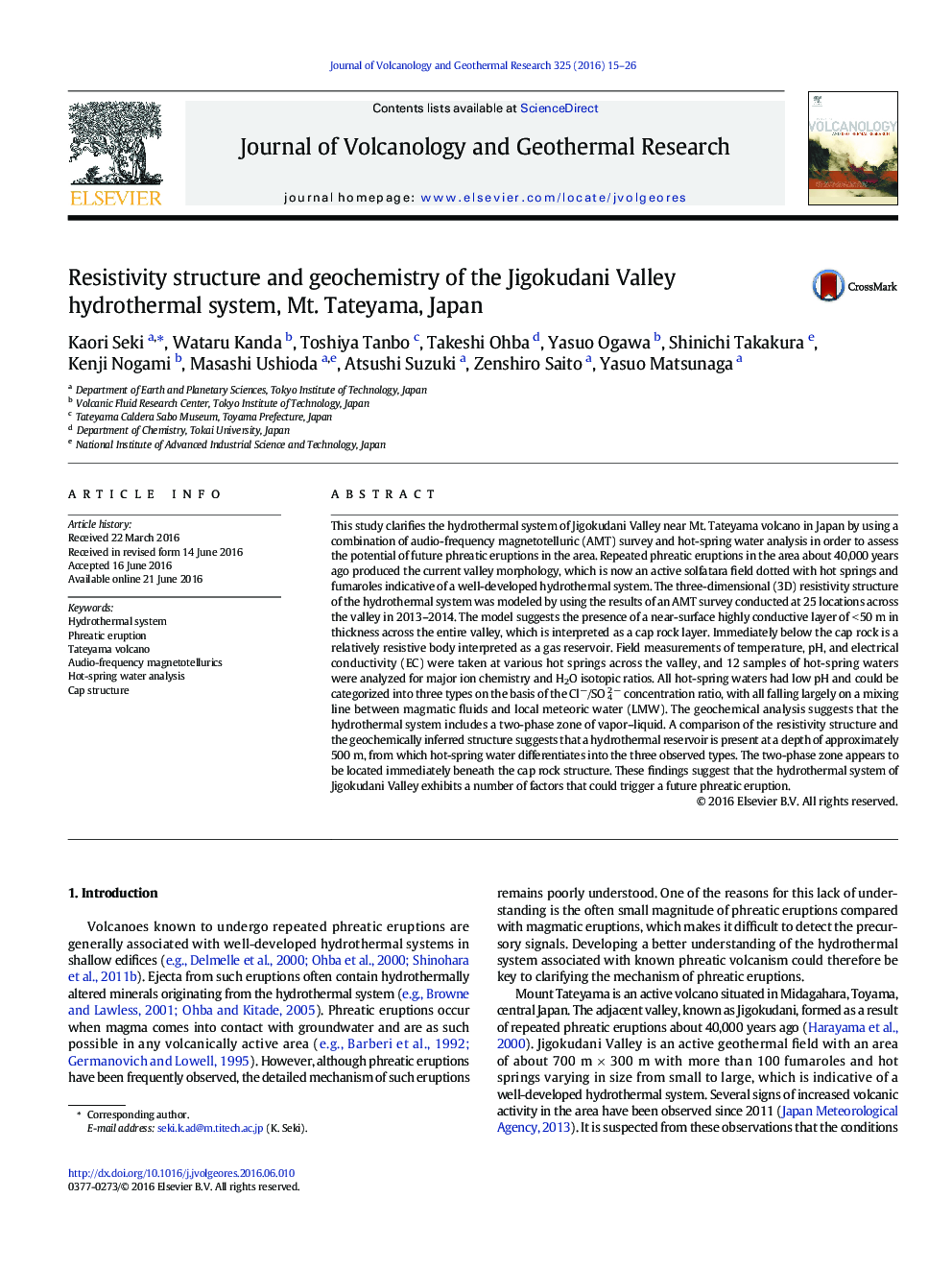| Article ID | Journal | Published Year | Pages | File Type |
|---|---|---|---|---|
| 6439706 | Journal of Volcanology and Geothermal Research | 2016 | 12 Pages |
Abstract
This study clarifies the hydrothermal system of Jigokudani Valley near Mt. Tateyama volcano in Japan by using a combination of audio-frequency magnetotelluric (AMT) survey and hot-spring water analysis in order to assess the potential of future phreatic eruptions in the area. Repeated phreatic eruptions in the area about 40,000Â years ago produced the current valley morphology, which is now an active solfatara field dotted with hot springs and fumaroles indicative of a well-developed hydrothermal system. The three-dimensional (3D) resistivity structure of the hydrothermal system was modeled by using the results of an AMT survey conducted at 25 locations across the valley in 2013-2014. The model suggests the presence of a near-surface highly conductive layer of <Â 50Â m in thickness across the entire valley, which is interpreted as a cap rock layer. Immediately below the cap rock is a relatively resistive body interpreted as a gas reservoir. Field measurements of temperature, pH, and electrical conductivity (EC) were taken at various hot springs across the valley, and 12 samples of hot-spring waters were analyzed for major ion chemistry and H2O isotopic ratios. All hot-spring waters had low pH and could be categorized into three types on the basis of the Clâ/SOÂ 42Â â concentration ratio, with all falling largely on a mixing line between magmatic fluids and local meteoric water (LMW). The geochemical analysis suggests that the hydrothermal system includes a two-phase zone of vapor-liquid. A comparison of the resistivity structure and the geochemically inferred structure suggests that a hydrothermal reservoir is present at a depth of approximately 500Â m, from which hot-spring water differentiates into the three observed types. The two-phase zone appears to be located immediately beneath the cap rock structure. These findings suggest that the hydrothermal system of Jigokudani Valley exhibits a number of factors that could trigger a future phreatic eruption.
Related Topics
Physical Sciences and Engineering
Earth and Planetary Sciences
Geochemistry and Petrology
Authors
Kaori Seki, Wataru Kanda, Toshiya Tanbo, Takeshi Ohba, Yasuo Ogawa, Shinichi Takakura, Kenji Nogami, Masashi Ushioda, Atsushi Suzuki, Zenshiro Saito, Yasuo Matsunaga,
